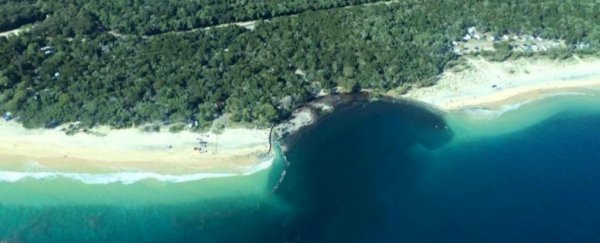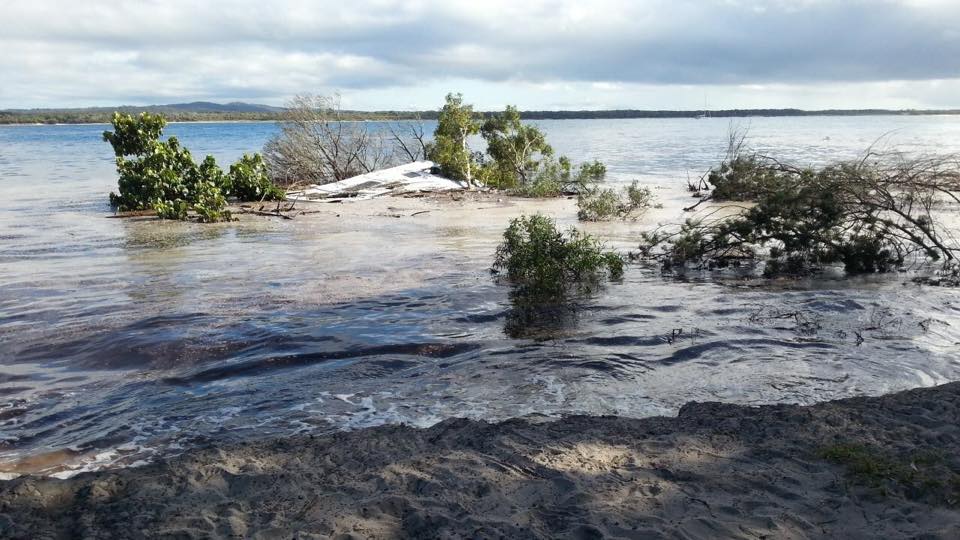Late on Saturday night, a huge sinkhole formed below a campsite on Queensland's Sunshine Coast, swallowing a car, caravan, and several tents, forcing the evacuation of roughly 300 people. Thankfully, no injuries have been reported.
Around 200 metres of the beachfront and 50 metres of a popular campground at Inskip Point near Rainbow Beach have now collapsed into the 3-metre deep hole. A similar sinkhole emerged in 2011 at the same campsite, and geoscientists are now investigating how stable the region is, and whether more land is likely to disappear.
So what exactly is a sinkhole? Basically, they occur when cave systems and cavities below ground collapse, and the sand or soil on the surface starts funnelling into them. This can be dangerous enough, but when water is involved, that falling land can start to behave like quicksand, sucking in everything in reach. This is what happened here, and back in 2013 in Florida, when a man was killed when his bedroom collapsed into a sinkhole.
Sometimes these underground cavities just naturally collapse to produce sinkholes, but they're often triggered by heavy rain or flooding, which destabilises rocks beneath Earth's surface. Scientists have shown that something as simple as emptying a swimming pool is enough to trigger a sinkhole.
Earthquakes can also trigger the collapse, but despite a few recent small quakes in Queensland, scientists have ruled this out as a possible trigger for the Inskip Point sinkhole.
"This area has a history where sinkholes occur regularly, it is something to do with the way sediments are formed and the way water moves through the Earth over millions of years or thousands of years," geotechnical engineer Allison Golsby from consulting company ConsultMine told the ABC. "An earthquake can trigger a sinkhole from a cavity but it has to basically happen on the day or in a very close time frame to the earthquake. In this case I don't see the link."
According to a camper who evacuated the site, the sinkhole sounded like a thunderclap as it opened up, and it quickly started pulling in land.
Geoscientists are now monitoring the area to figure out exactly what went on, but Golsby told The Australian that some research suggests the entire peninsula may one day disappear.
"People have said that at some stage they think Inskip Point may not be there," she said. "Now that could be thousands of years, it could be hundreds of years."
For now, there's no sign of that happening, but the area will continue to be closely monitored to assess how stable it is, and make sure that the sinkhole isn't about to get any bigger.
"There are many reasons that this could occur, but there appears to be elements of a slip or slump failure here, rather than just a sinkhole-type behaviour," Golsby said. "Slips and slumps are usually formed through very loose material that is either saturated or semi-saturated with water, water movement, getting to a point where they become unstable and they fall away because they can't be supported by whatever is underneath them or at their base."
Hopefully we don't need to tell you this, but the experts recommend people stay well away from the area for now, in case any more land collapses.

